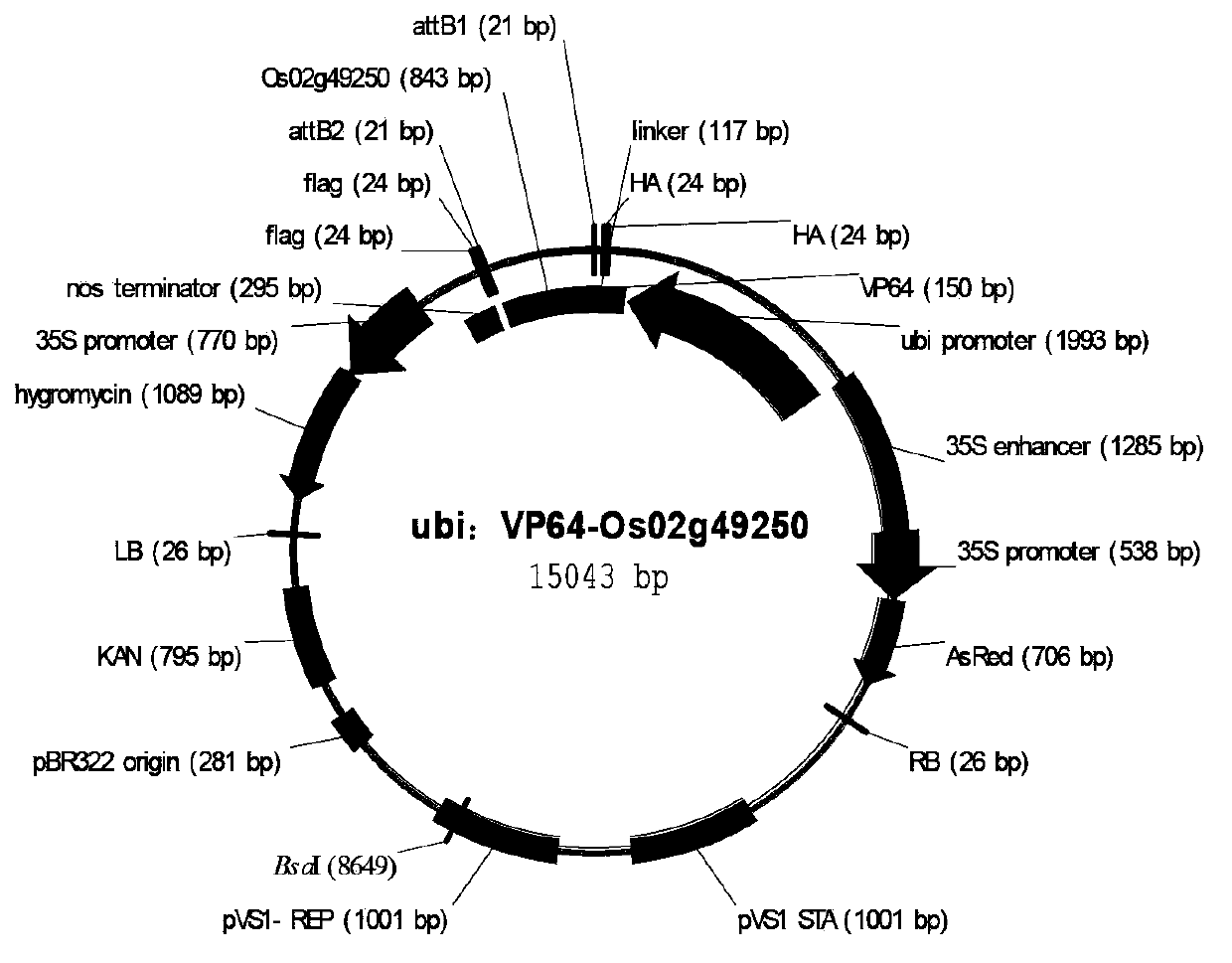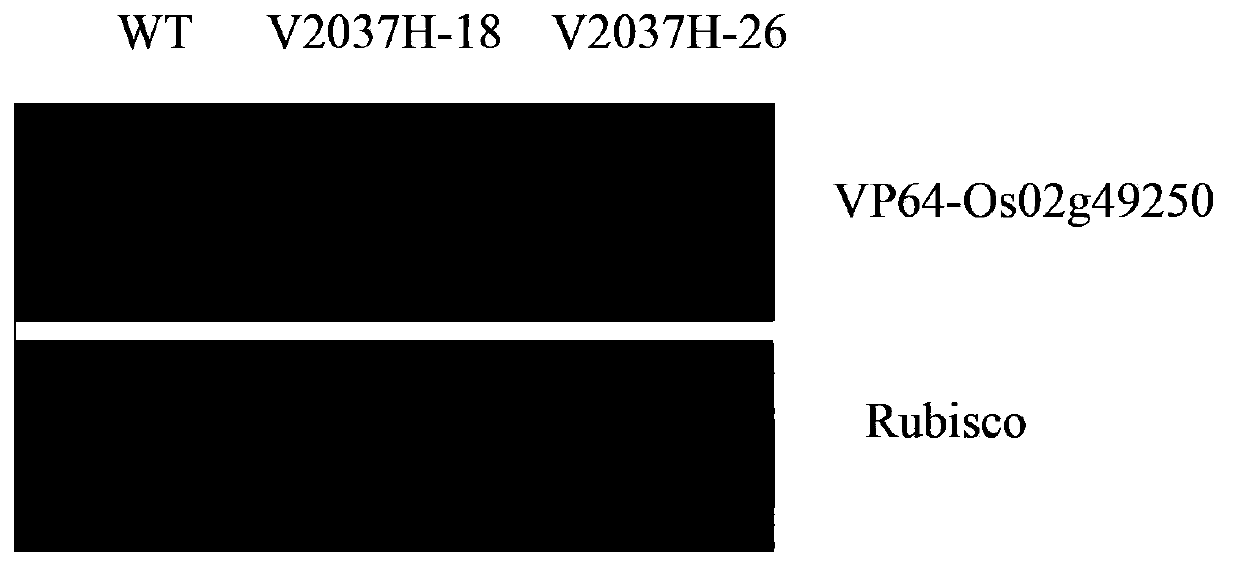Application of rice transcription factor Os02g49250 gene
A rice transcription factor and gene technology, applied in the field of genetic engineering, can solve problems such as the weakening of hybrid breeding advantages
- Summary
- Abstract
- Description
- Claims
- Application Information
AI Technical Summary
Problems solved by technology
Method used
Image
Examples
Embodiment 1
[0035] The separation of embodiment 1Os02g49250 gene and the construction of plant expression vector
[0036]Find the Os02g49250 gene in the plant transcription factor database, design PCR amplification primers according to its sequence (F1: 5'-CAAAAAAGCAGGCTTCATGGAGGAGGAGAAGGAGGAGA-3' and reverse primer R1: 5'-CAAGAAAGCTGGGTC GACCGACATGAACGCGA AATC- 3'). The complete sequence of Os02g49250 was obtained by PCR using the total cDNA of wild-type Nipponbare rice as a template, and its nucleotide sequence is shown in SEQ ID No.1.
[0037] Perform PCR according to the PrimeSTAR polymerase amplification system and reaction procedures. This process includes two rounds of PCR. The primers of the first round of PCR use the gene primers (F1 and R1) with a partial adapter attB linker, while the template of the second round uses the PCR product of the first round, and the primers use the complete adapter attB Primers (attB5'adaptor: 5'-GTGGGGACAAGTTTGTACAAAAAAGCAGGCTTC-3', attB3'adaptor...
Embodiment 2
[0038] The acquisition of embodiment 2 transgenic rice plants
[0039] Take the mature seeds of rice 'kitaake', shell them manually or mechanically, select the plump, smooth and spot-free seeds and inoculate them on the induction medium for induction culture after being sterilized. Rice callus with good appearance and good growth was selected as the recipient material, and ubi:VP64-Os02g49250 was transferred into the rice callus by the Agrobacterium-mediated method, and acetosyringone containing 100 μM and O.D. value of 0.7 were used. The AAM transformation liquid of Agrobacterium was transformed, and the callus soaked in the transformation liquid was placed on the co-culture medium for co-cultivation, cultured in the dark at 25°C for 3 days, then placed on the screening medium for about 30 days, and subcultured every 10 days. Then, the screened out resistant calli were transferred to the differentiation medium for differentiation for about 20 days, and subcultured every 10 da...
Embodiment 3
[0044] Identification of embodiment 3 transgenic positive strains
[0045] In order to detect the overexpression of ubi: VP64-Os02g49250 gene in T2 transgenic rice, the VP64 antibody was used to identify it at the protein level, after SDS-PAGE protein electrophoresis→immunoblotting→immunofluorescence reaction, the results of Western Blot identification showed that The transgenic plants had the target protein, while the wild type had no bands ( image 3 ).
[0046] The specific Western Blot experiment process is as follows:
[0047] Put an appropriate amount of sample into liquid nitrogen and freeze it, grind it into powder, add an appropriate amount of loading buffer, mix well, and centrifuge at 12000rpm for 10 minutes; take 5μl of the supernatant and add the sample, electrophoresis at 90V for SDS-PAGE for 30 minutes, and electrophoresis at 120V for 60-90 When the bromophenol blue reaches the bottom of the gel, the electrophoresis can be stopped; after electrophoresis, the m...
PUM
 Login to View More
Login to View More Abstract
Description
Claims
Application Information
 Login to View More
Login to View More - R&D Engineer
- R&D Manager
- IP Professional
- Industry Leading Data Capabilities
- Powerful AI technology
- Patent DNA Extraction
Browse by: Latest US Patents, China's latest patents, Technical Efficacy Thesaurus, Application Domain, Technology Topic, Popular Technical Reports.
© 2024 PatSnap. All rights reserved.Legal|Privacy policy|Modern Slavery Act Transparency Statement|Sitemap|About US| Contact US: help@patsnap.com










